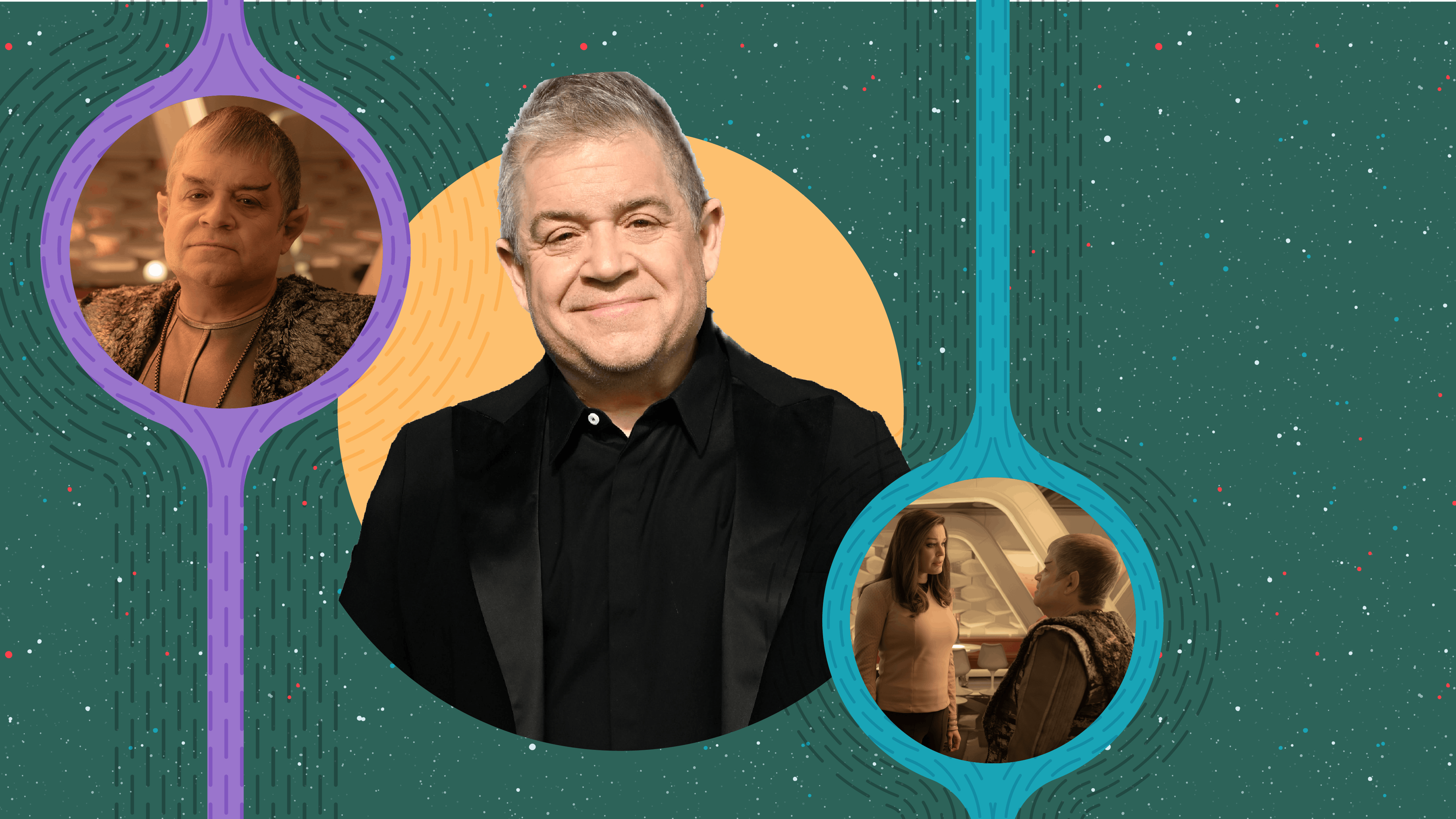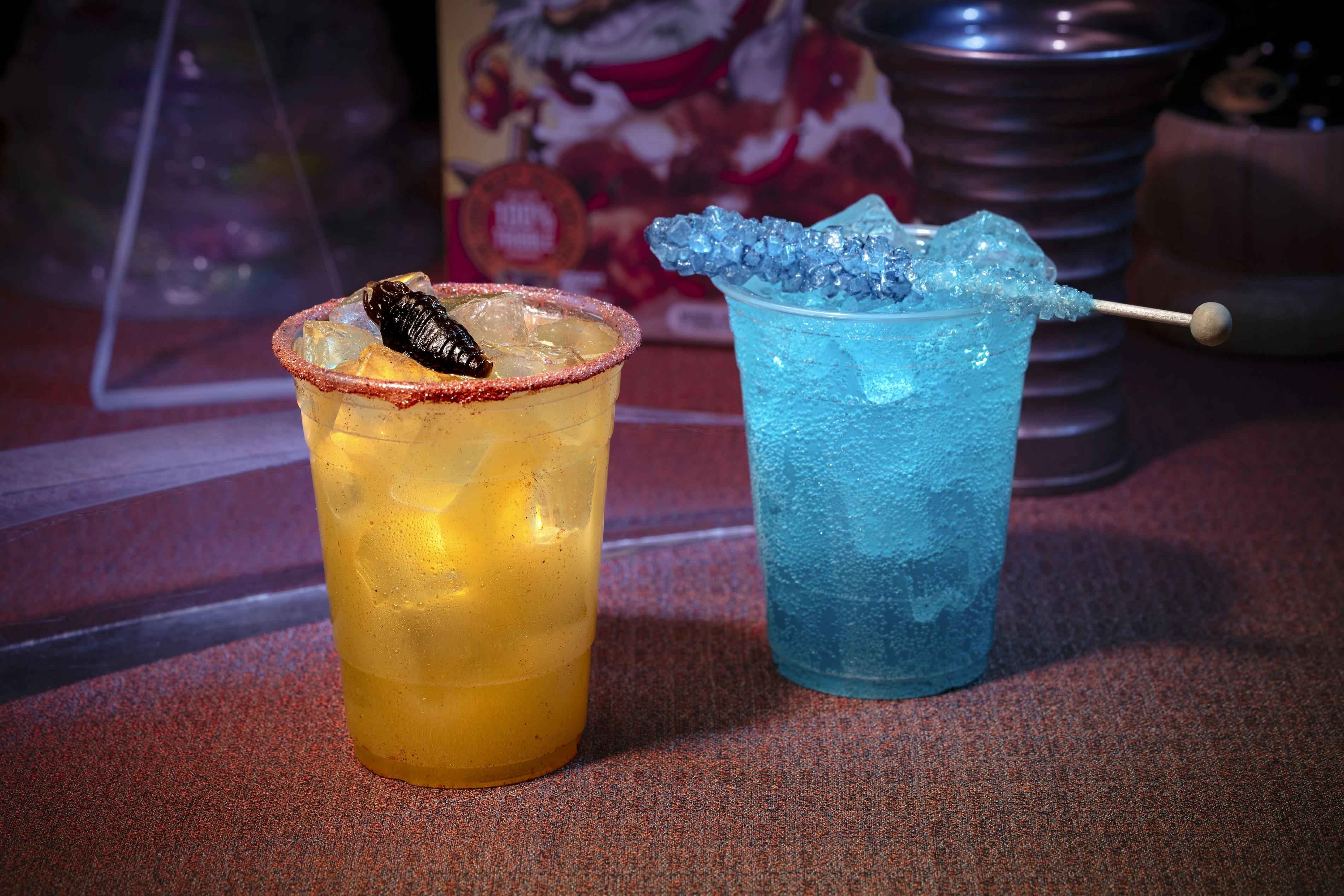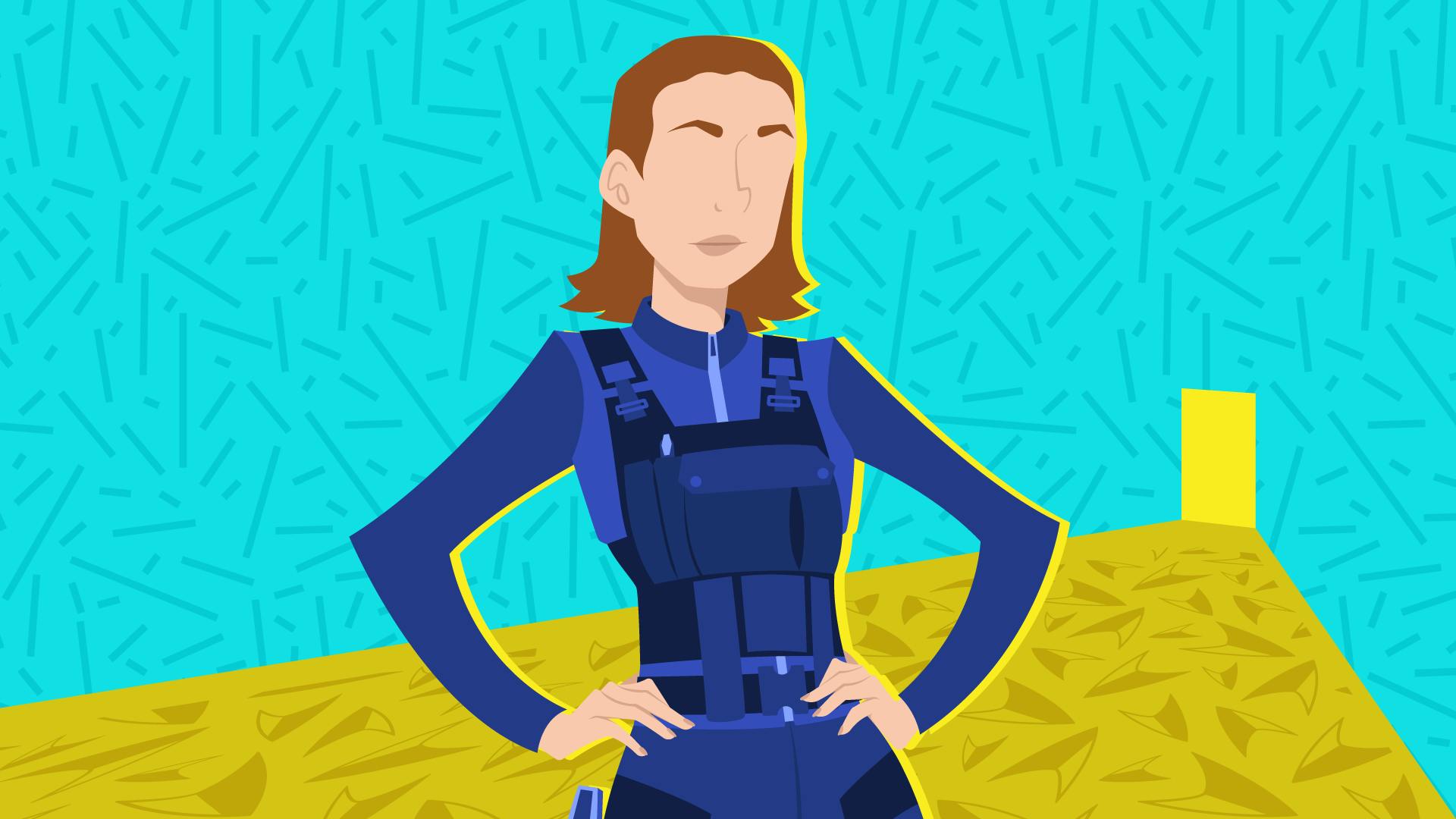Published May 2, 2023
WARP FIVE: Ed Speleers Reflects on Q, the Borg, Family, and More
The Star Trek: Picard actor walks us through all the big beats from the final season!
SPOILER WARNING: This article contains story details and plot points for the finale of Star Trek: Picard "The Last Generation."
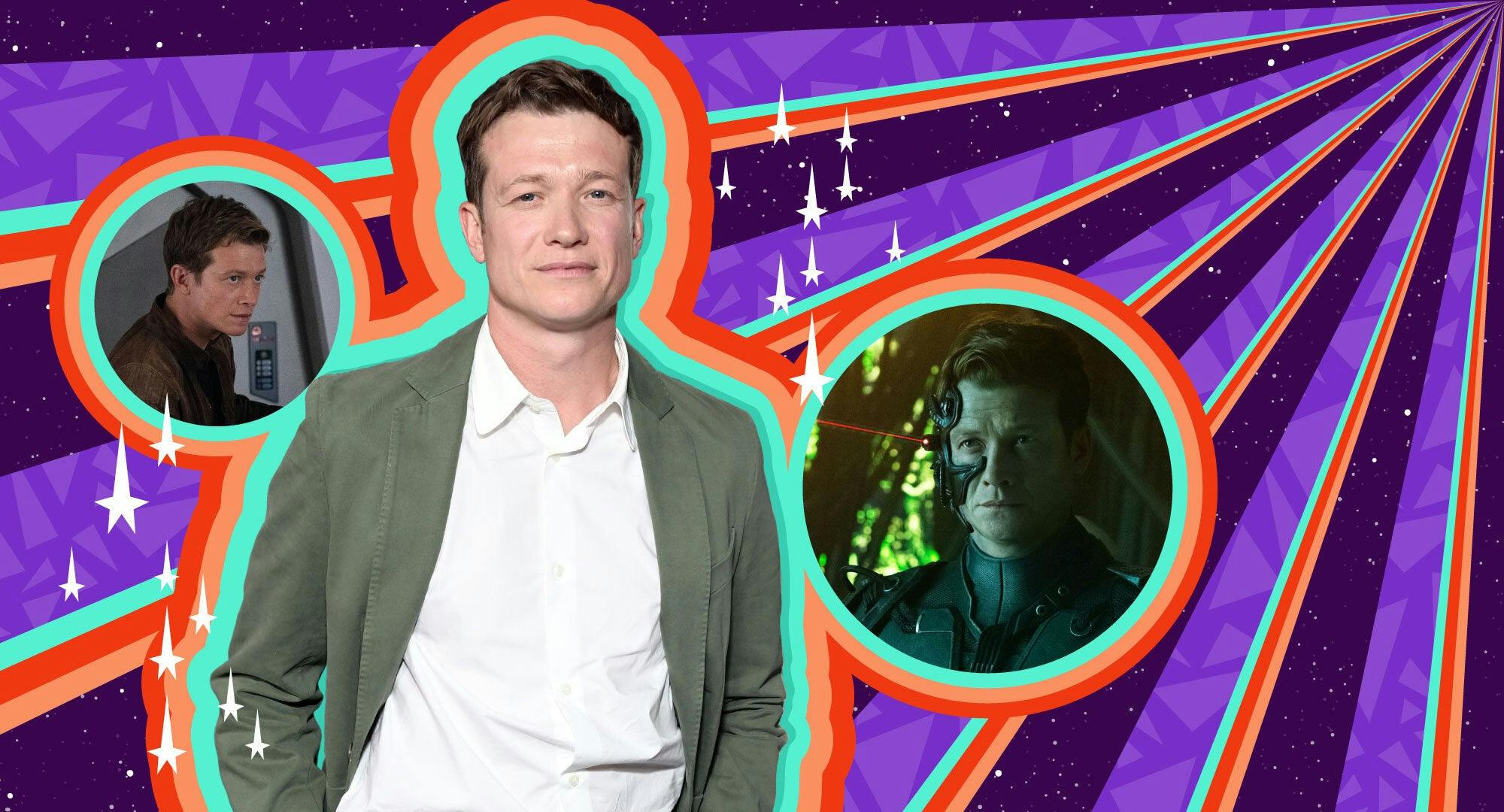
Getty Images / StarTrek.com - Rob DeHart
Welcome to Warp Five, StarTrek.com's five question post-mortem with your favorite featured talent from the latest Star Trek episodes.
With the third and final season of Star Trek: Picard all out for the world to enjoy, all the mysteries of who, and what, is Jack Crusher has been laid bare. The course of his life changed dramatically once he boarded the U.S.S. Titan; and as Captain Liam Shaw noted, “It’s been a weird week.”
StarTrek.com had the opportunity for a long discussion touching upon all the big beats of the season with actor Ed Speleers about Jack Crusher’s journey throughout the season, from developing new abilities, keeping his father at arm's length, being Borg, but as Geordi La Forge put it, "that is not all he is," meeting Q, and much more!
On Picard’s Betrayal and Jack’s Brokenness
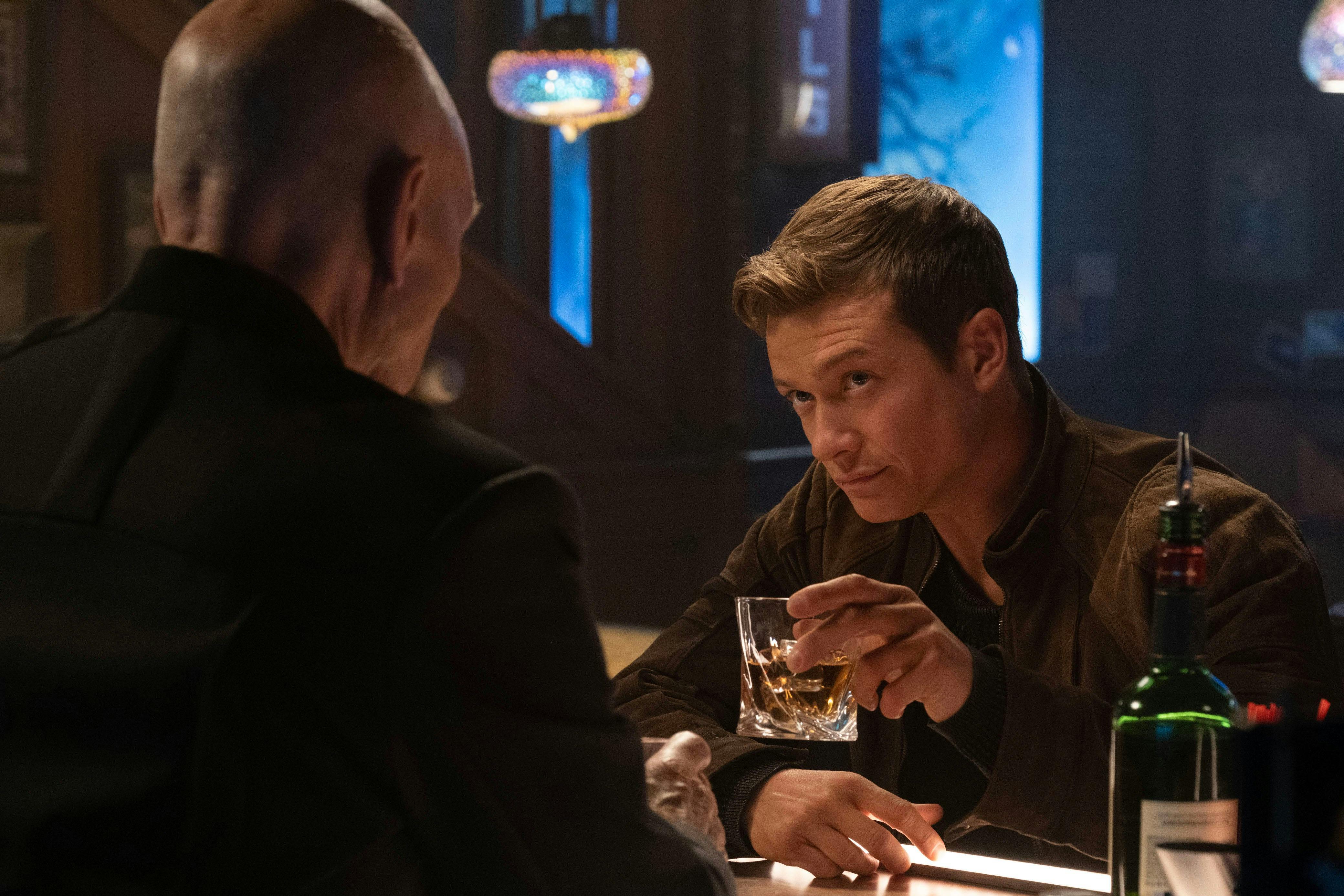
StarTrek.com
At the start of the season, Jean-Luc Picard learns of his adult son with Beverly Crusher. The retired admiral struggled with the truth that Beverly kept this from him, and that Jack Crusher wants absolutely nothing to do with him. However, it’s more complicated than that.
We see in a flashback that Jack did seek him out, witnessing his interactions with a group of young Starfleet cadets. After regaling them with stories about his best friend at the Academy, Jack Crusher’s namesake, and adventures with his crew, Picard reveals that he never sought out a life outside, stating, “Starfleet has been the only family I ever needed,” rejecting and wounding his son far deeper than he ever realized.
“Right at the base of all of this is it’s coming from a place of miscommunication,” reflects Speleers. “If you look at it from Picard’s point of view, he doesn’t know what he’s saying at that point. That’s an accidental slip of the tongue. He’s trying to inspire these young Starfleet cadets. However, Jack has taken it on himself to try and track down his old man and maybe it’s an olive branch. There’s obviously curiosity, how could you not? Your dad’s the most famous person in the world. It’s huge and he wants to know him. And it’s completely gut-wrenching. That’s why it’s important that he’s got this thick-skin and he’s got this aggressiveness towards Picard because he’s hurt.”
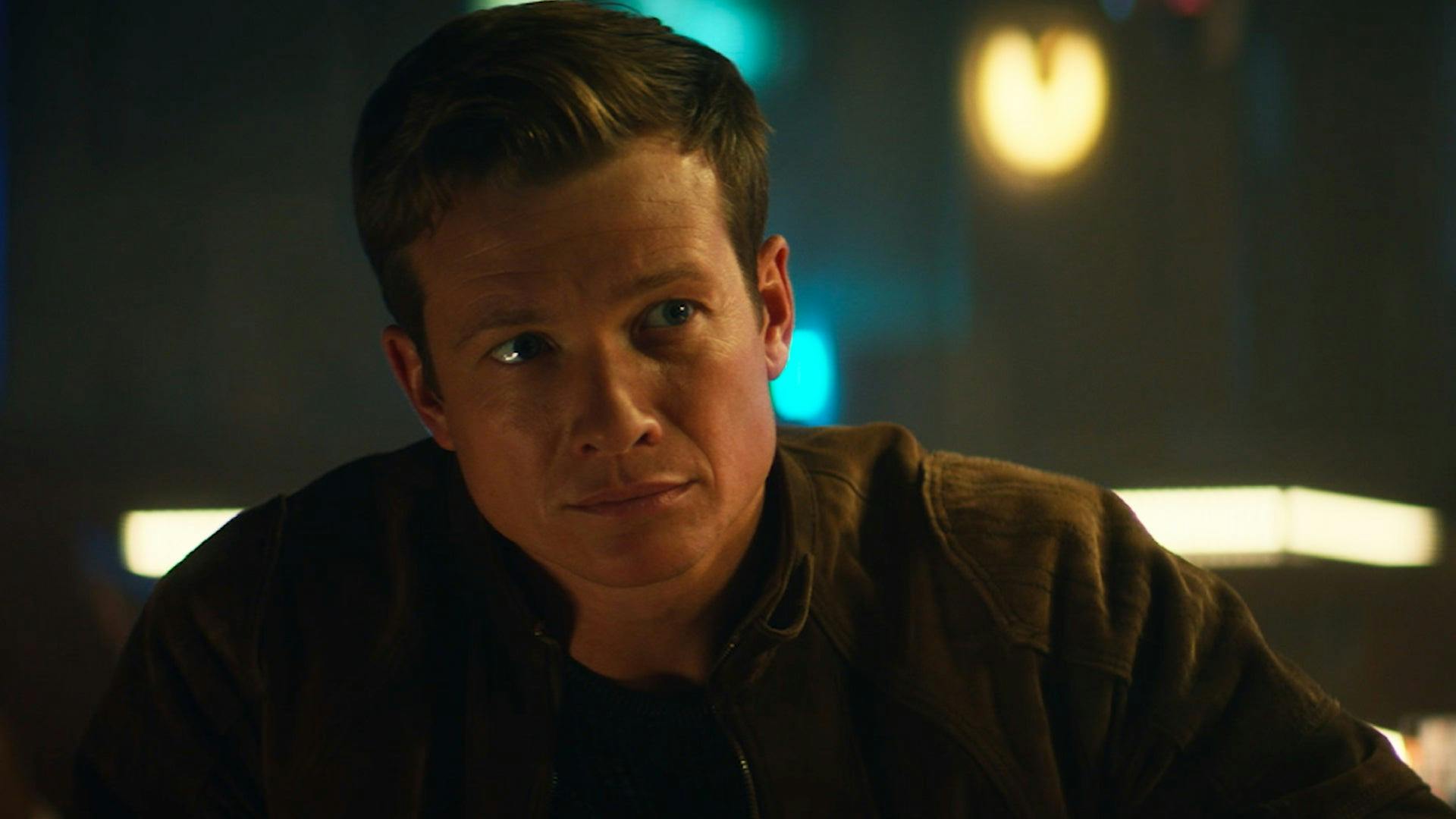
StarTrek.com
Probing deeper, Speleers says, “The anger, the frustration, and the flippant nature of his, it’s all masks for something else that’s deep-rooted. That’s what I love about the story — it’s this longing for connecting, which is seen through his dad, his old man, which is incredibly emotional. I was so drawn to it because it’s something that, whatever your relationship with your parents, we all have that relationship with a parent in some way. Even if it’s a bad relationship, there is something so universal. As a dad myself, as a son, I wanted to explore it. It was tough at times to try and comprehend because that’s really driving him, in some space. He doesn’t want to admit it to himself [how much that moment hurt him]. What happened in that scene is awful, and now, it’s a catalyst for how Jack lives his life.”
On Jack’s Guilt, Need for Connections, and Evolution as Borg
Throughout the season, Jack Crusher has maintained the air that he’s a rogue explorer traversing the galaxy, keeping everyone at a distance. However, we come to learn that he’s deeply lonely, pushing everyone away as he tries to come to grips with the complicated feelings within him. Despite what he says, one can spot his sincerity and earnestness in connecting with Captain William Riker, Commander Seven, Ensign Sidney La Forge, and even his father, Jean-Luc Picard.
Like Sidney La Forge’s connection with Seven, Jack ends up sharing screen-time with the ex-Borg on a number of instances, from hiding him from the Intrepid’s officers, sharing their love of the starships housed at the Fleet Museum, and taking on Vadic on the Bridge of the Titan. It’s no wonder why Seven would value his presence as special counselor.
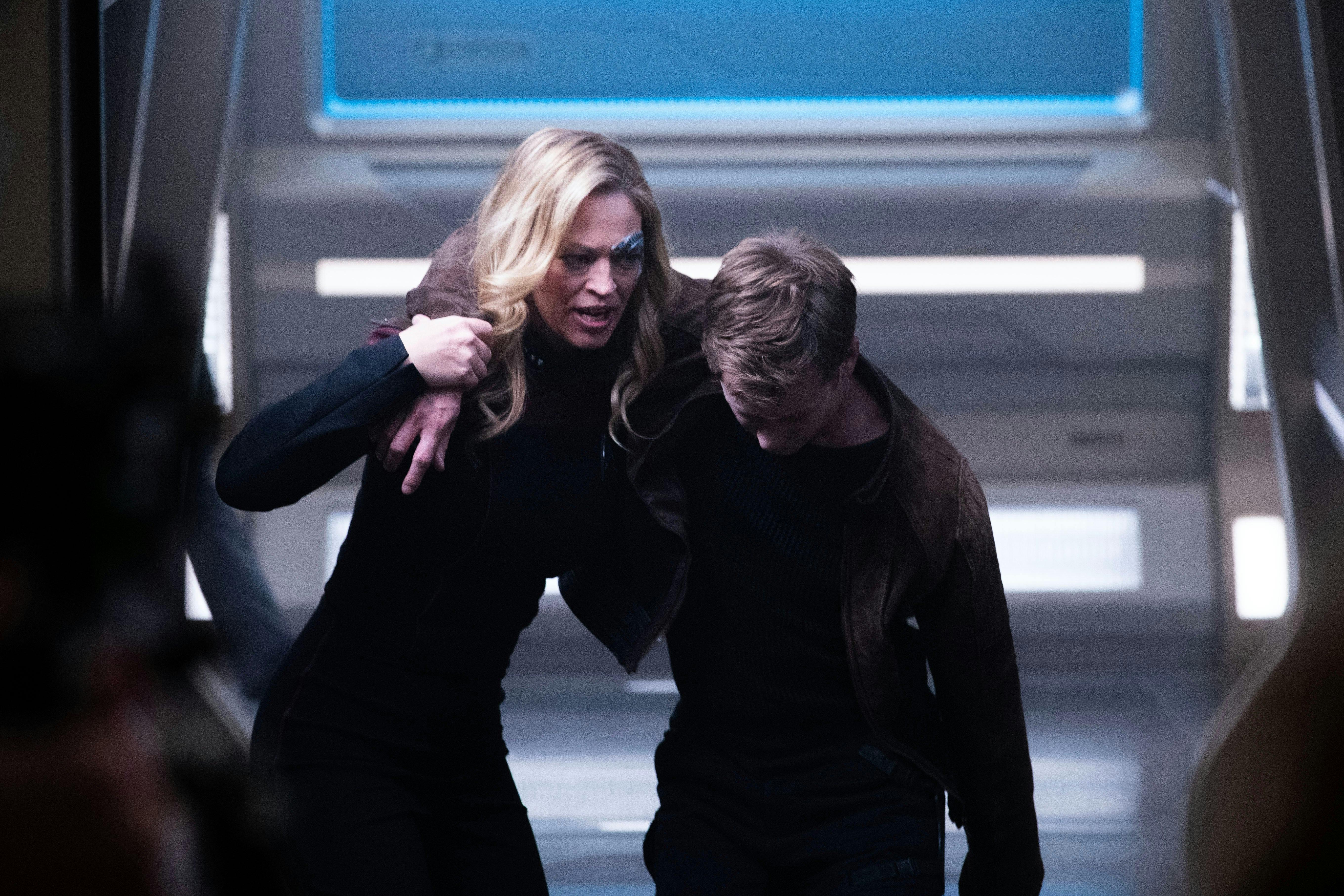
StarTrek.com
Speleers sees both Jack and Seven as “kindred spirits,” believing, “There’s a recognition of being an outsider and living on the edge and then trying to find their way into confirming with society, in this case Starfleet. They understand one another; there’s a rogue streak to them. I love that scene when they’re looking at the starships. It’s a love sort of, quite a tender moment, but it’s full of humor and it’s in the middle of everything’s that going on in Jack’s head at the point where he’s in complete shambles. To have this moment of levity with Seven, it just inflates it. It comes down to the wonderful writing. You look at the team of writers they had on board, and they nail it in terms of moments of levity, then driving back into humor, then driving back into serious tension.”
Offering more insight to the internal conflict Jack feels, Speleers explains, “There’s something that he feels is deeply wrong with him. It’s something that has been running along in him all his life, and he hasn’t been able to put his finger on it.”
“Once we are aware that it’s to do with the Borg, it’s the worst news possible,” he elaborates. “Before we get ready for that moment, it’s trying to understand what in his world would make him feel this broken. He feels like there’s an illness; something’s not right about him and he can’t work out if it’s mental or physical. He’s had these voices, these visions. He’s always felt like he got these strange abilities that creep him out, put him on edge. They completely mess with his mind, and anyone who’s hearing voices in their head, it’s a dangerous place to be.”
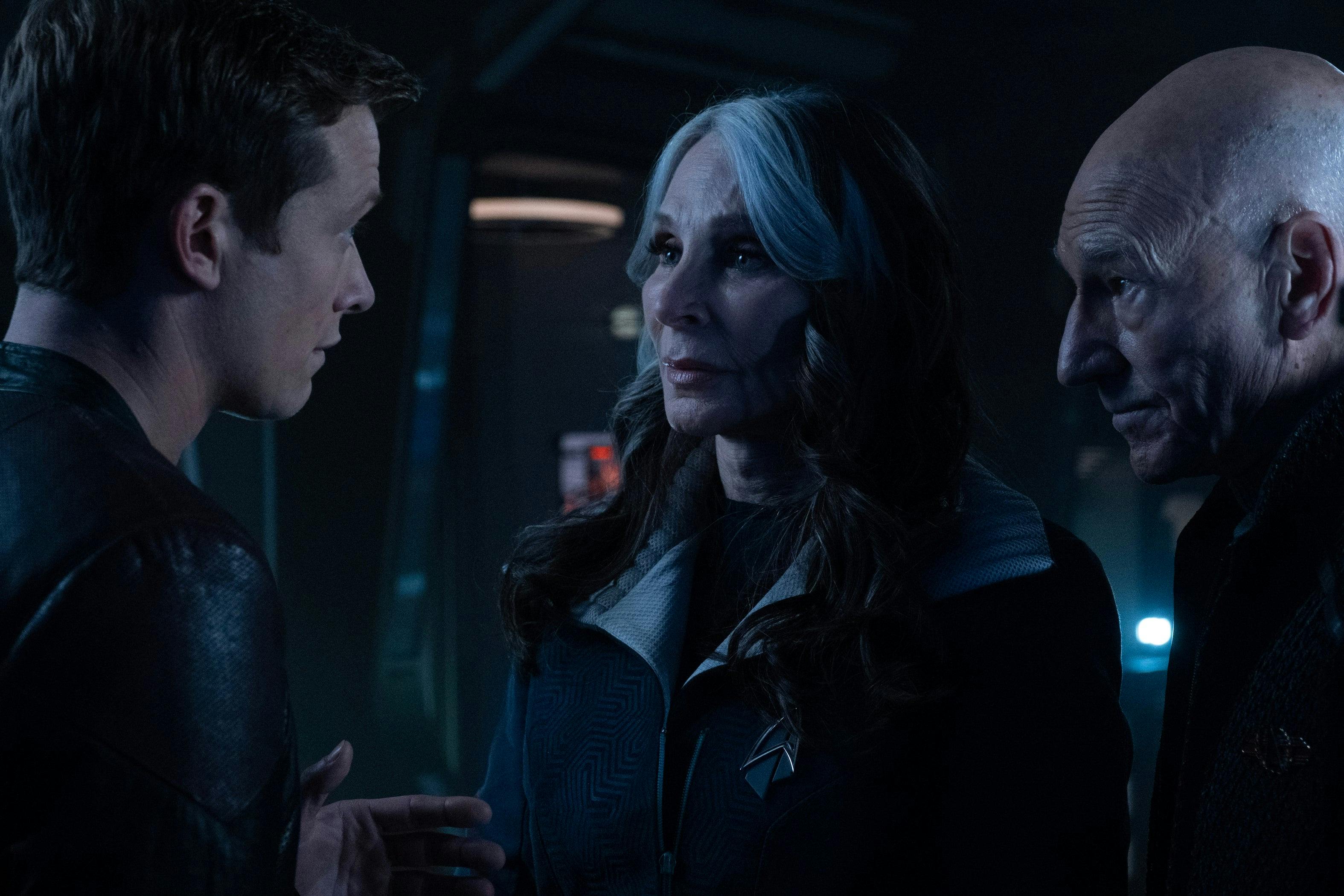
StarTrek.com
Every time he puts others in the line of fire, whether it’s family man Will Riker or the crew of the Titan, Jack wants to rush headfirst to fix it despite the protests of his parents. He doesn’t want to put others out for him, nor does he want to owe anyone anything, adding, “It’s such a high stakes moment, and it’s a lot for this guy to process. Even if there’s no one to help him, he still wants to tackle it. And if it means that’s the end of him, then he’ll take that because he believes that’s the best thing for everybody else. It must be gut-wrenching for him, knowing that he’s had to live with this all his life and never felt like he belonged. This ties into it; it’s two-fold, between the deep-rooted longing for connection with his dad, but also he’s longing to understand what this thing is within him and how that connects him to the world.”
As such, it makes sense he couldn’t resist the lure of the Borg Queen and why he ultimately gave up fighting. “It drives the loneliness, that idea of being assimilated,” Speleers remarks. “You have something so tragically wrong with you that you cannot let anybody in. You cannot because you don’t know how you are going to respond. You don’t know if you are really dangerous to other people. It ramps up so quickly because everything is just becoming overbearing for him.”
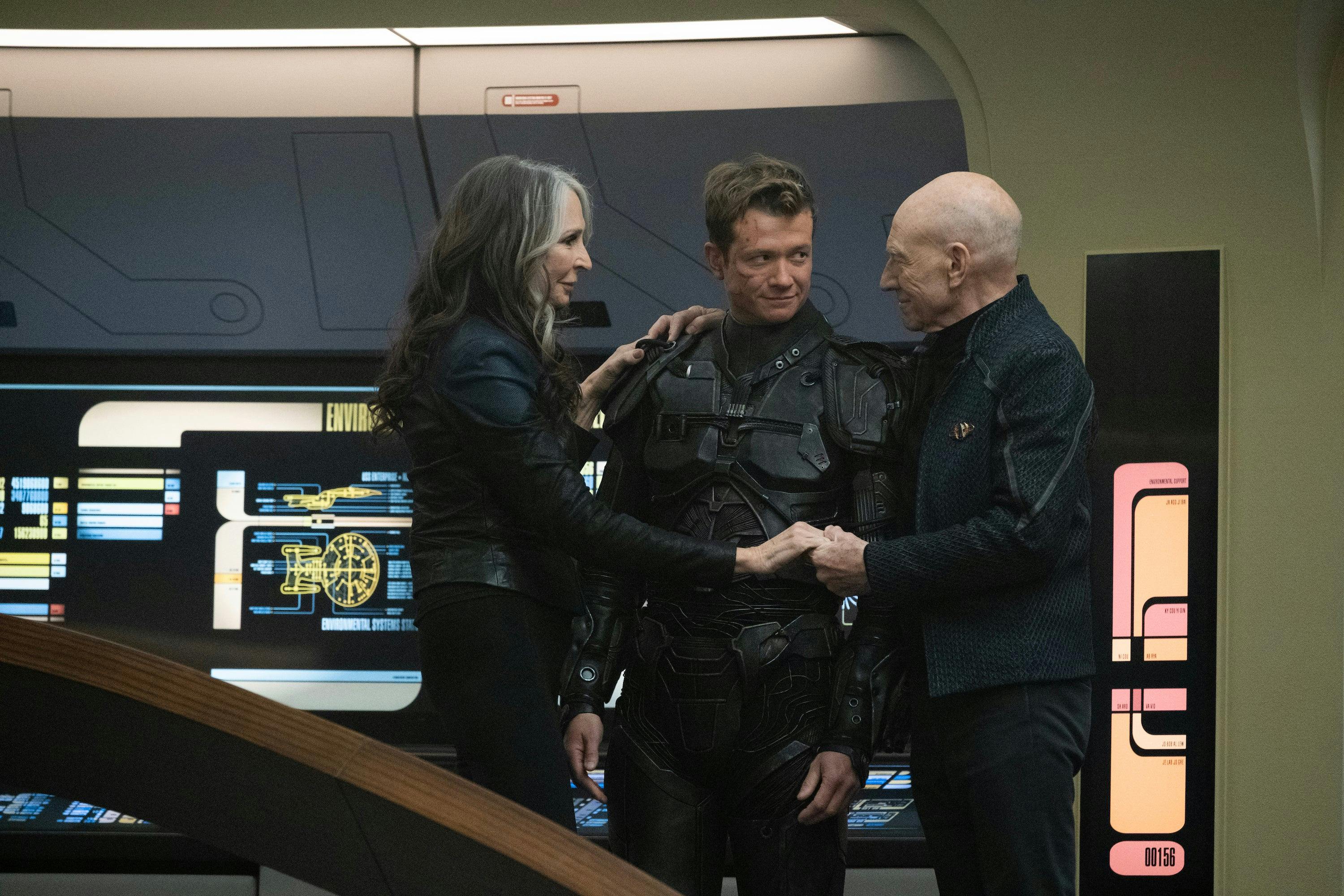
StarTrek.com
It's here where Jack is very much like the man his father is, a man who didn’t have the connection he longed for at home and went out and found what he was looking for in Starfleet. Once aboard the Borg Cube, with the rest of losing his son imminent, Jean-Luc realizes losing Jack would be as universe-shattering as losing the entire galaxy to the Borg, possibly more so. It was his own guilt and embarrassment of inadequacies and time as Locutus that clouded him for seeing his son for who he was. When he accepts this, and how Jack’s presence has forever changed him, and acting now as a father as opposed to a Starfleet officer, they were both able to relinquish the Queen’s control over them and mend the void they’ve both felt deep down.
On Speleers’ Immersion in the Star Trek Universe
As Jack Crusher’s story unfolded throughout the season, his resistance to what was happening internally within was weakening, magnifying the brokenness he deeply felt.
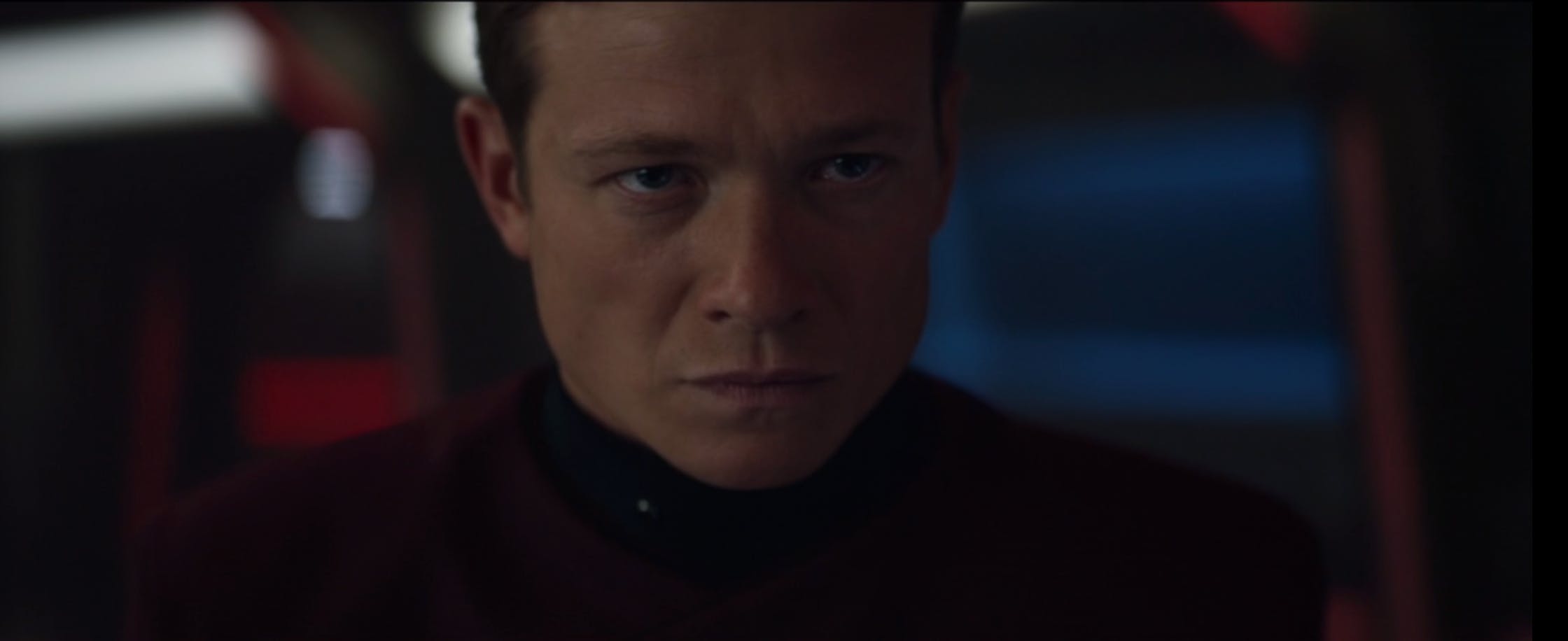
StarTrek.com
With the stress of being hunted by the Changelings, his idiosyncrasies began manifesting outwardly. What he first thought were side effects of inheriting his father’s Irumodic Syndrome, the truth was much worse. From Jean-Luc’s time assimilated as Locutus, the Borg found a way to change his biology, rewriting his genetic code, which he passed on to Jack. Where the rogue adventurer first experienced eerie visions and was able to hear the internal thoughts of others, he was soon able to converse with them telepathically, as seen in “The Dominion,” when Vadic and her soldiers boarded and took control of the Titan. It didn’t stop there as he was able to see what was happening to Starfleet officers biologically when they stood on the transporter pads, almost disassociate while brawling, and even control the movements of others in a puppet-like fashion.
Speleers couldn’t get enough of all the stunts, exclaiming, “It’s as cool as it gets,” before noting, “That’s the first time my son and my daughter looked at me like I’m really somebody cool.”
“Those [action sequences] are some of the best to do,” he describes. “This is the whole thing where I was given the keys to the castle. If I wasn’t doing the big dramatic scenes with Patrick Stewart as my dad, the next day I’m fighting people, shooting them with phasers, doing cool stunts. Also not just doing that on an amazing sit, but to have it shot so brilliantly. You’re having an out-of-body experience; the whole thing was so surreal.”
Phasers on Stunt: Inside Star Trek: Picard Season 3's Action
Speleers lavishes tons of praise on stunt coordinator Guy Fernandez and fight coordinator Matt Mullins, both of whom he spent hours getting on brilliantly with, stating, “They were both just great humans who took the time to make those things look as cool as possible. It’s just great fun, and I want to go back and do it now!”
As for the narrative surrounding these new abilities, Speleers delights in it, “From a storytelling and an attitude point of view, it was great. It was like being given these superpowers, and I’ve never been in a position as an actor to have that sort of thing going on. It was a next-level experience. It was like I opened a big toy chest.” Speleers still found a way to ground what Jack was enduring, “There are all these big great ideas where you’re getting to control and mind-meld, but still, running right through the middle of that is great narrative and great understanding of why this character is going through that the ramifications of that. It’s not as simple as being, ‘Well, he’s got all these great powers and things he can do.’ There’s a reason why and we need to tackle it because it’s not necessarily a good thing. That’s great storytelling in itself.”
Speleers’ Jack Crusher transformation would be complete without an epic set piece and a costume to match.
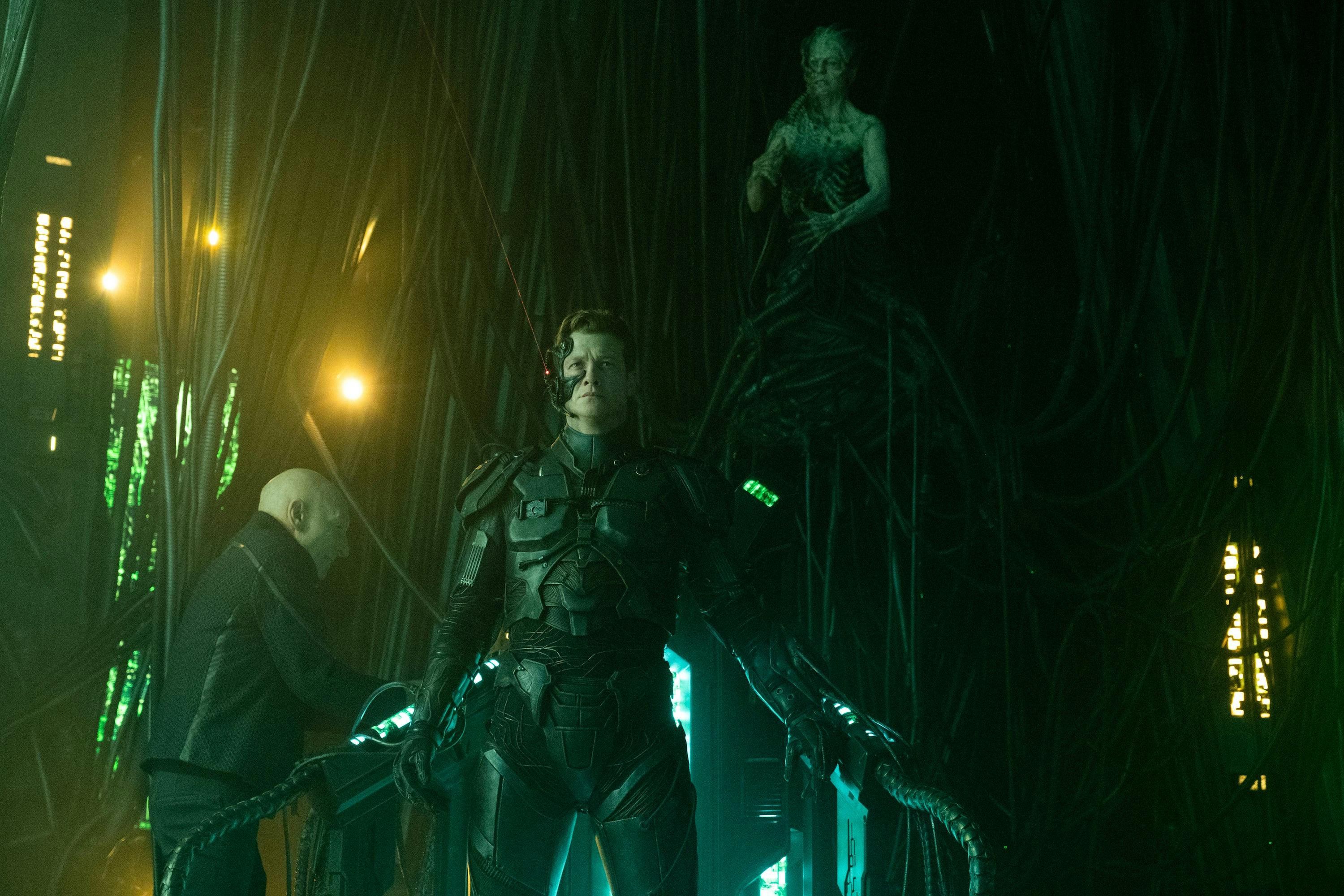
StarTrek.com
After feeling abandoned and alienated again following Deanna Troi’s Betazoid mind probe and Jean-Luc defaulting to Starfleet protocol, Jack leaves the Titan in search for answers from the voice haunting him in his head. For the final two episodes of the season, Jack finds himself on the Borg Cube, and not just any ordinary cube, it’s a vessel stitched together by multiple cubes with the Queen feeding on the last generation of her kind, clinging on to the last threads of survival. Speleers finds the set piece “jaw-dropping,” comparing it to something straight out of the first Alien film.
“It was just so expansive,” comments Speleers on the prestige television of it all. “I walked around with my kids and my girlfriend, and we were allowed to get a quick sneaky look around when no one was there. The details are so well thought out. It was almost like being in a theme park; it blew my mind to be honest. Against, it was one of those pinch yourself moments of being, ‘Oh I’m really on a proper film set now.’ But that’s the thing, we’re doing all this for television. Everything, every step of the way, felt so much bigger and grander.”
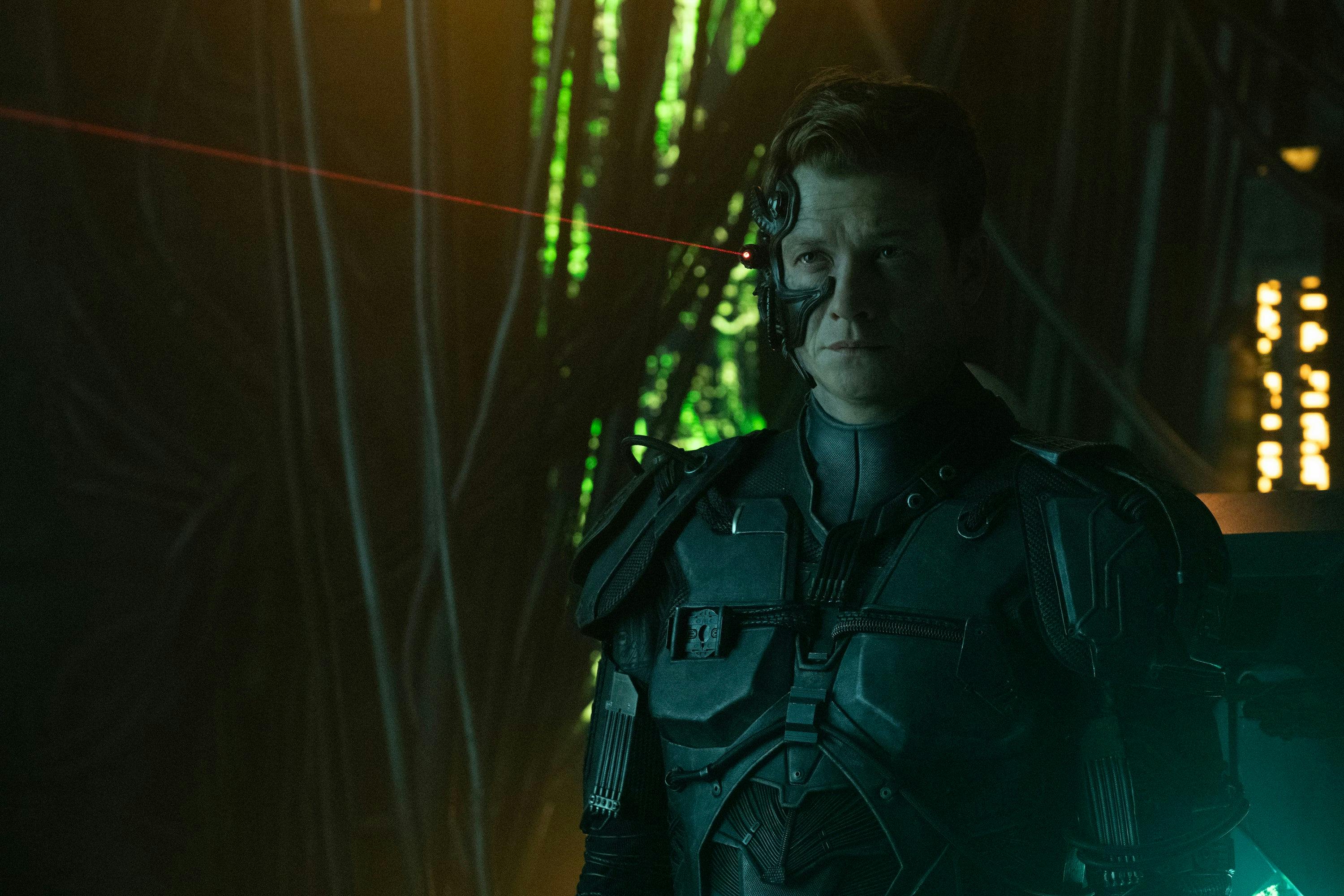
StarTrek.com
Once he relinquishes control to the Borg Queen, Jack is assimilated as Võx, the voice of the Collective itself. Speleers has nothing but praise for costume designer Michael Crow and his department when talking about his “heavy, but detailed” Võx Borg costume. “Michael Crow is, A, the calmest man in the world and, B, is such an exceptional talent. His team is incredible, and Deborah Ambrosino, who made the costume. She’s done a lot of Marvel suits, and I think they wanted a Marvel quality to this Võx suit. It was heavy, but it also wasn’t. I felt like I could move in it. I felt pretty cool, to be honest. It felt like the Terminator or something. It really lent to the character well, and that’s the meat of it. That is also why I love Michael Crow and his team so much. Everything they made me costume-wise really was in keeping with who the character is and allowed me to move and feel that in a way just added to the process.”
On Joining Starfleet
In “The Last Generation,” similar to parents dropping off their kids on the first day of school, we catch up with Admirals Jean-Luc Picard and Beverly Crusher and their son arriving at the young Crusher’s first posting within Starfleet as he nervously paces behind them on the shuttle. We learn that he was on an accelerated track, which Jack partially credits to nepotism. Jean-Luc softly reassures him that this was all his doing and how proud he is of him.

StarTrek.com
Believing his son’s first posting is the U.S.S. Titan-A, both Beverly and Jack surprise Jean-Luc that the starship had been rechristened in honor of him and his crew, with its new designation as the U.S.S. Enterprise NCC-1701-G. Aboard the Enterprise-G, Ensign Jack Crusher joins Captain Seven and First Officer Raffi at the ship’s command, serving as special counselor to the captain. Raffi aptly remarks, “Still can’t believe Starfleet saw fit to give a thief, a pirate, and a spy their own ship,” with Jack calling them a “buncha ne’er-do-wells and rule-breakers.”
Commenting on this next chapter for Jack, Speleers praises, “It’s a poignant moment for Jack. It’s that full circle [moment] and why I suppose Terry [Matalas] is right about this being an origin story for Jack because we see him actually embracing what could be his future.”
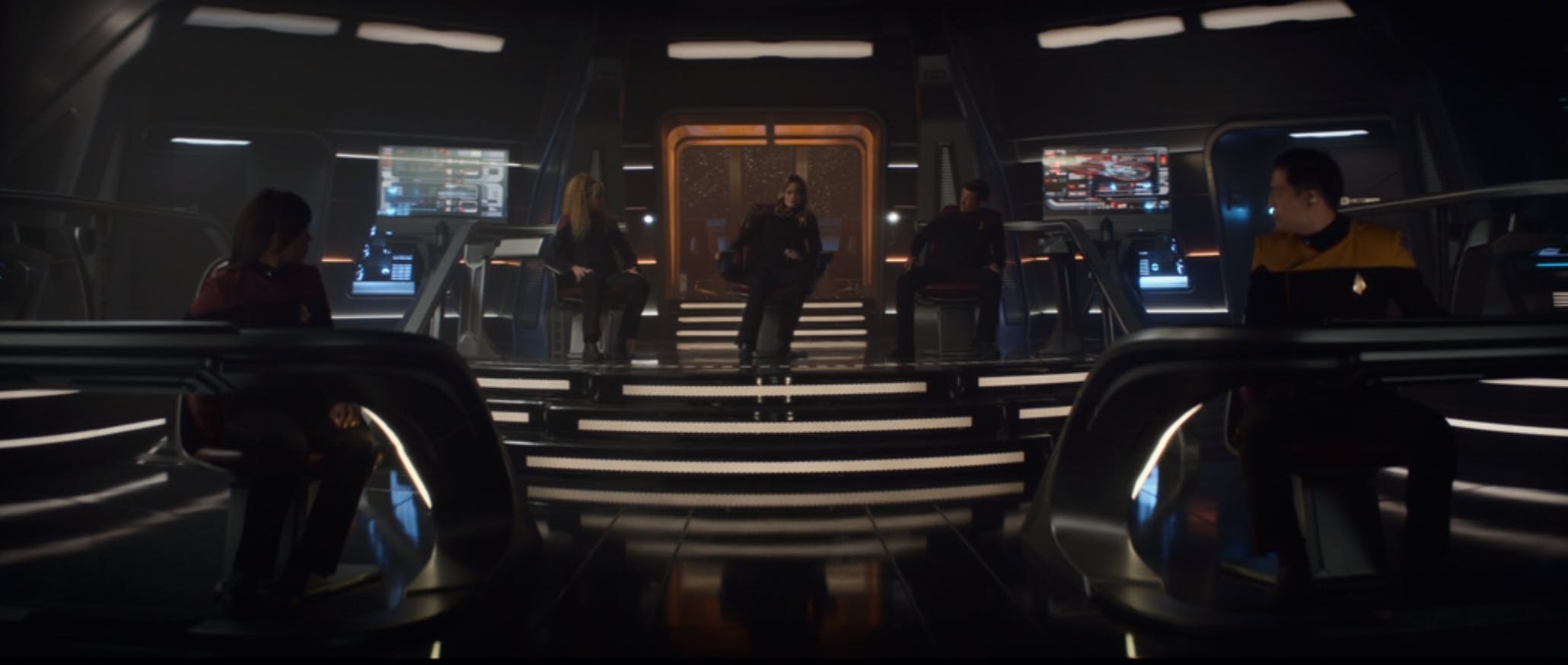
StarTrek.com
“He’s nervous about it,” he continues. “He’s still got bridges to build, and you’re not going to be going from being an outsider to part of the gang straight away. It takes time so he’s apprehensive. But filming all of that, it was such a wonderful way to round it all off. Getting to go straight into the ship and be with Raffi and Seven, having that rapport and patter in that closing scene, straight away there you see a connection between these rogues.”
On Star Trek’s Post Credit Scene
Star Trek rarely offers up a post credit scene, but this year, fans were treated to two. There was one following the third season finale of Star Trek: Lower Decks, and now another at the conclusion of the Star Trek: Picard series.
While unpacking his belongings and settling into his quarters, aboard his new home on the Enterprise-G, Jack suddenly hears the voice of an unfamiliar guest, “Well, look at you, a chip off the old block.” Turning around, the new ensign comes face-to-face with his father’s long-time frenemy, who first chides him for thinking of time so linearly, brushing off his second season’s demise. Q then informs him that while Jean-Luc Picard and humanity’s trials were over, “I’m here today because of you. You see, yours, Jack, has just begun…”
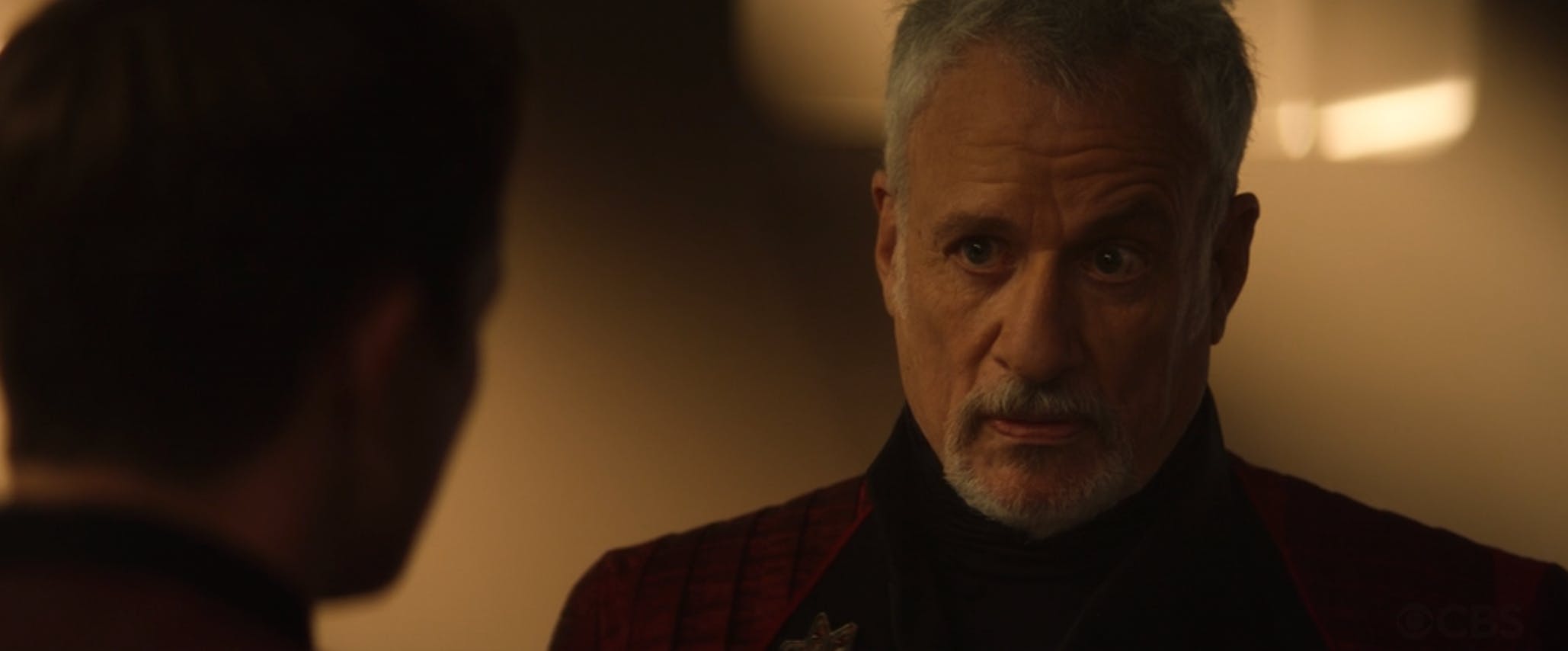
StarTrek.com
With “The Last Generation” serving as the finale for Picard, as well as the epic conclusion for the Star Trek: The Next Generation saga, it’s fitting that the finale scene harkens back to the very first episode of the latter series, “Encounter at Farpoint,” where the crew of the Enterprise-D first met the complicated being known as Q.
The post-credit scene came together quickly, filming during the series’ penultimate episode “Võx,” as the episode’s director and writer Terry Matalas, shared with a group of journalists during a roundtable interview, “We only had 20 minutes to shoot the scene. We literally got [John de Lancie] in, got him in that amazing outfit…. He’s phenomenal on his worst day, and we just banged it out. And so, I still get chills. I love that scene so much. It’s one of my favorite scenes in the finale.”
Speleers experienced excitement and trepidation sharing the scene with John de Lancie, who reprises the role of Q, sharing, “He’s royalty in Star Trek canon. He is absolute royalty and a very lovely, astute man. Obviously, we just had that one scene; it was a great scene to be had because he’s quite catlike in a scene. I don’t know if that’s him as a character or that’s him as him.”
“He kind of put me on edge when I was doing the scenes with him,” Speleers reveals, “because we’d be talking very nicely about family, and everything would be cool and it’d be like we felt like a connection. Then, suddenly, he’d just turn it on its head and just poke, which I love. I love it when an actor wants to go for it, and he’s the same.”
Referring to the quick production time and brief interaction between the characters, Speleers adds, “It seems very important, but we didn’t have much within it. It’s only three, four lines each, something like that, but we both pushed each other to try and do it as many different ways as possible. That’s great when you got an actor that you get the chance to do that. Just keeps it fresh and it also keeps you on your toes.”

